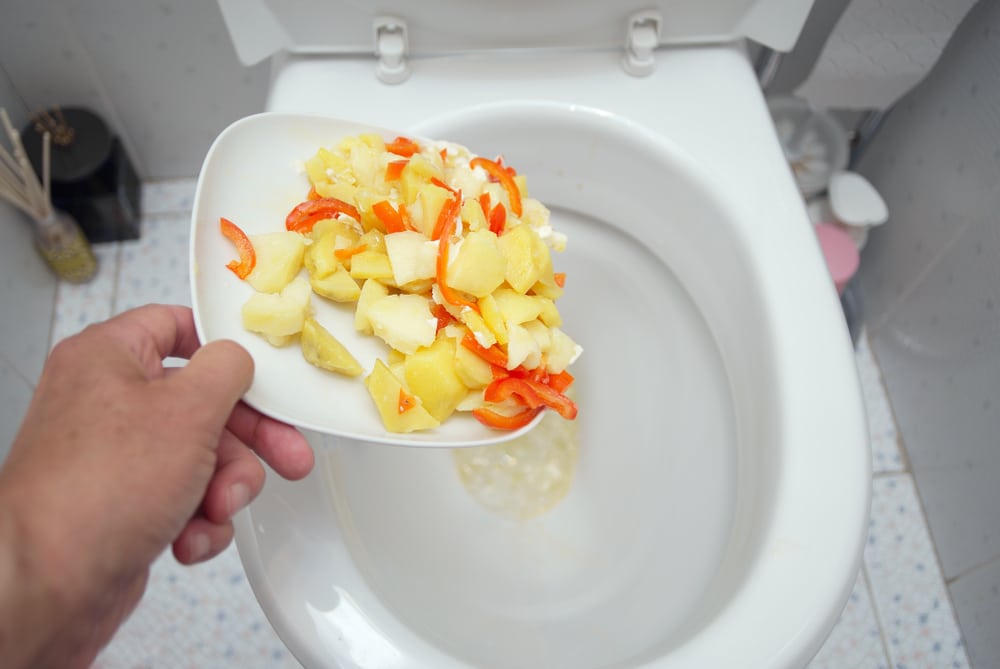Are You Allowed to Dispose of Food in the Toilet?
Are You Allowed to Dispose of Food in the Toilet?
Blog Article
Are you currently on the lookout for insight around What Can Happen If You Flush Food Down the Toilet??

Introduction
Lots of people are commonly confronted with the predicament of what to do with food waste, particularly when it involves leftovers or scraps. One usual inquiry that develops is whether it's fine to flush food down the toilet. In this article, we'll explore the reasons why individuals could consider purging food, the consequences of doing so, and different approaches for proper disposal.
Reasons why individuals may think about flushing food
Absence of awareness
Some people may not understand the potential damage brought on by flushing food down the toilet. They may wrongly think that it's a harmless practice.
Benefit
Purging food down the commode might seem like a quick and easy service to taking care of undesirable scraps, particularly when there's no close-by trash can offered.
Negligence
Sometimes, people may merely pick to flush food out of large negligence, without considering the consequences of their activities.
Effects of flushing food down the bathroom
Environmental influence
Food waste that winds up in waterways can add to contamination and harm marine communities. Furthermore, the water used to purge food can strain water sources.
Plumbing problems
Purging food can cause clogged pipes and drains pipes, triggering expensive pipes fixings and troubles.
Sorts of food that need to not be purged
Coarse foods
Foods with coarse appearances such as celery or corn husks can obtain entangled in pipelines and create obstructions.
Starchy foods
Starchy foods like pasta and rice can soak up water and swell, bring about clogs in pipes.
Oils and fats
Greasy foods like bacon or food preparation oils need to never ever be purged down the bathroom as they can solidify and cause clogs.
Correct disposal techniques for food waste
Utilizing a garbage disposal
For homes equipped with waste disposal unit, food scraps can be ground up and purged with the plumbing system. Nonetheless, not all foods are suitable for disposal in this manner.
Recycling
Particular food packaging products can be reused, lowering waste and reducing environmental influence.
Composting
Composting is a green means to throw away food waste. Organic materials can be composted and made use of to enrich soil for horticulture.
The value of appropriate waste administration
Minimizing environmental damage
Correct waste administration techniques, such as composting and recycling, help lessen pollution and protect natural deposits for future generations.
Shielding plumbing systems
By preventing the method of flushing food down the commode, homeowners can avoid expensive pipes fixings and keep the honesty of their pipes systems.
Verdict
Finally, while it may be appealing to flush food down the toilet for benefit, it is essential to comprehend the potential consequences of this activity. By taking on appropriate waste management practices and dealing with food waste responsibly, people can contribute to healthier pipes systems and a cleaner atmosphere for all.
FLUSH FOOD DOWN THE TOILET?
FLUSHING FOOD CAN CAUSE BLOCKED DRAINS IN YOUR HOME
All of the plumbing fixtures in your home are connected to the same sewer pipe outside of your home. This outdoor sewer pipe is responsible for transporting all the wastewater from your home to the Council sewer mains. Even small pieces of food that go down the kitchen sink can cause problems for your sewer. It should therefore be obvious that flushing larger bits of food, such as meat, risks a clog in either the toilet itself or the sewer pipes. Flushing greasy food is even more problematic because oil coagulates when it cools, coating the interior lining of your pipes.
THE TOILET IS NOT A BIN
Food isn’t the only thing that people shouldn’t be flushing down the toilet. People use the toilet to dispose of all kinds of things such as tampons, makeup wipes, dental floss, kitty litter and even underwear. Water goes to great lengths to educate residents about the high costs and stress placed on wastewater treatment systems simply from people flushing the wrong stuff down the toilet. It costs taxpayers millions of dollars each year, and homeowners thousands in blocked drain repairs.
FLUSHING FOOD IS A WASTE OF WATER
Flushing food is a waste of our most precious resource - water. In June this year Level 1 water restrictions were introduced to protect water supply from drought conditions. Much of New South Wales continues to be affected by prolonged drought with recent figures revealing up to 97 per cent of the state remains in drought. Depending on whether you have a single or dual flush toilet, every single flush uses between five and 11 litres of water. In the current climate this is a huge amount of water to be wasting on flushing food that should be placed in the bin (or better yet, the compost).
https://www.jabplumbingsolutions.com.au/blog/can-you-flush-food-down-the-toilet

Do you appreciate reading about Flushing Food Down the Toilet?? Try to leave a comment directly below. We'd be happy to know your opinions about this write-up. We are looking forward to see you back again before long. Liked our write up? Please quickly share it. Let other people check it out. Many thanks for your time invested reading it.
Start Now Report this page